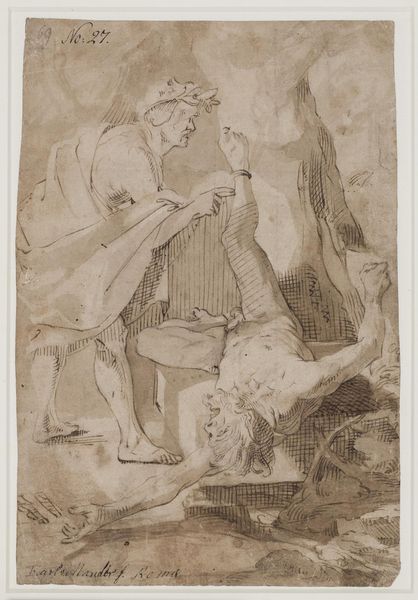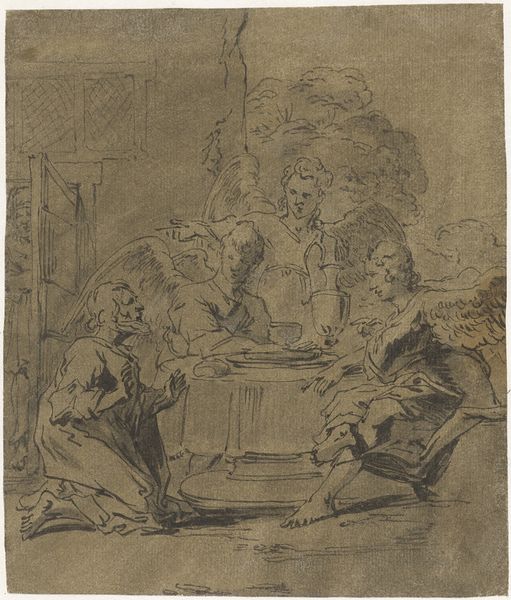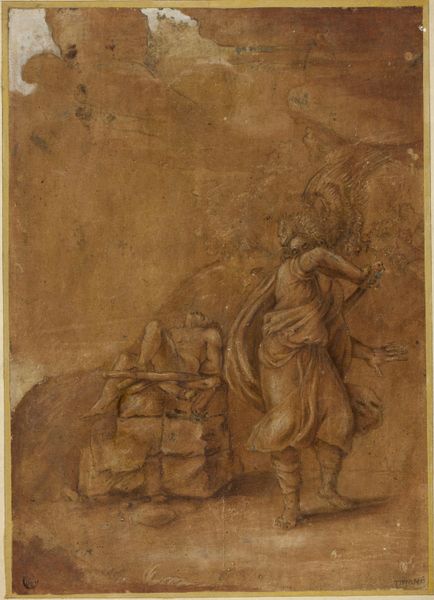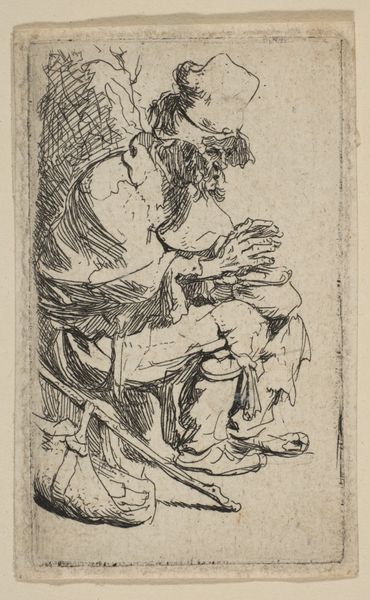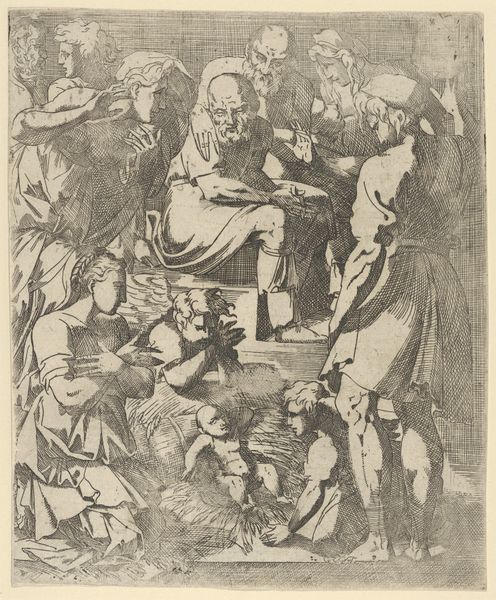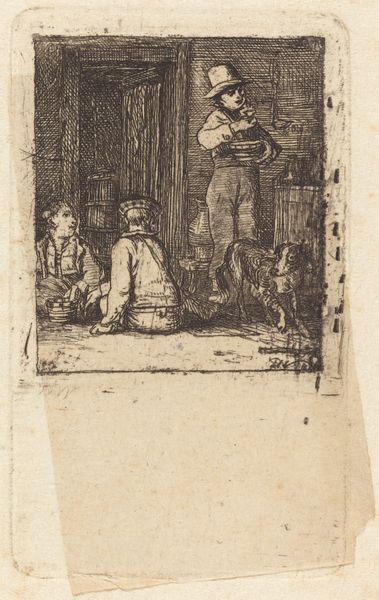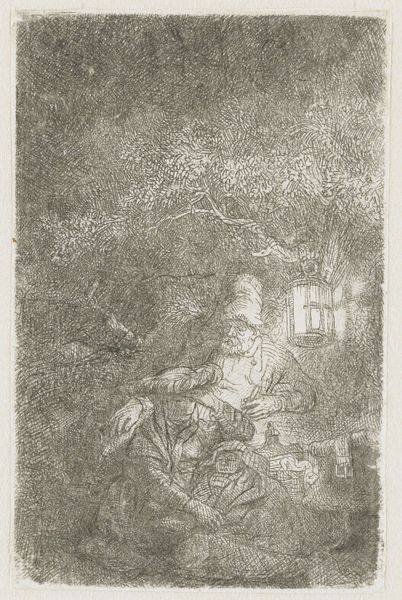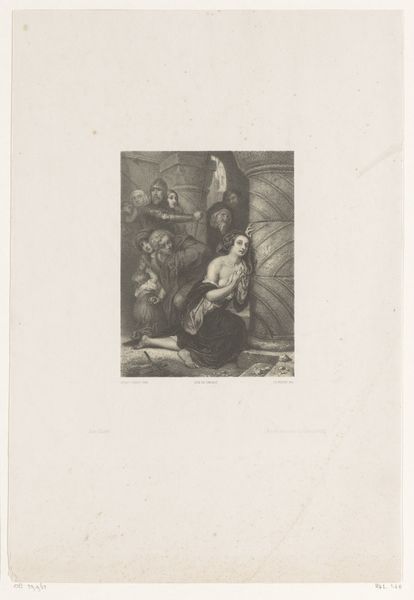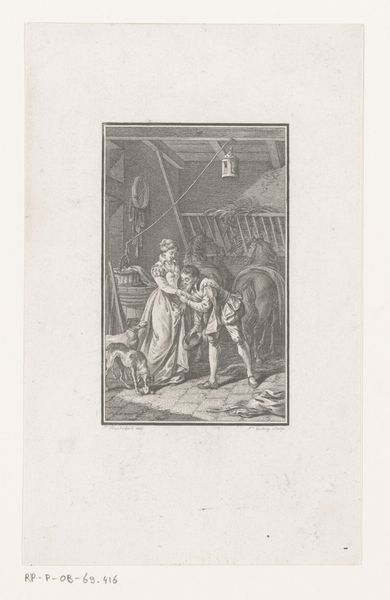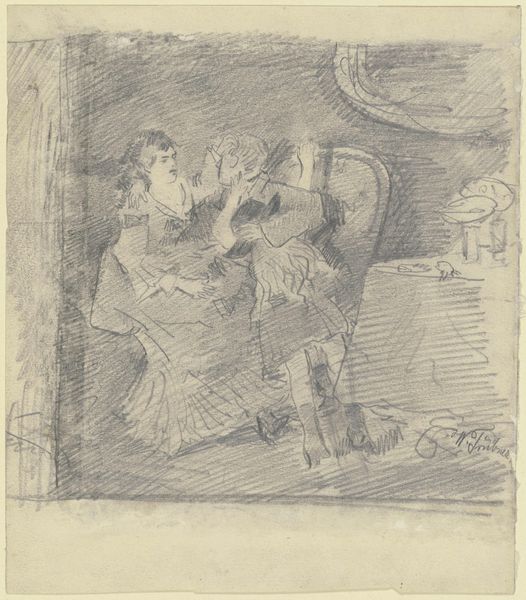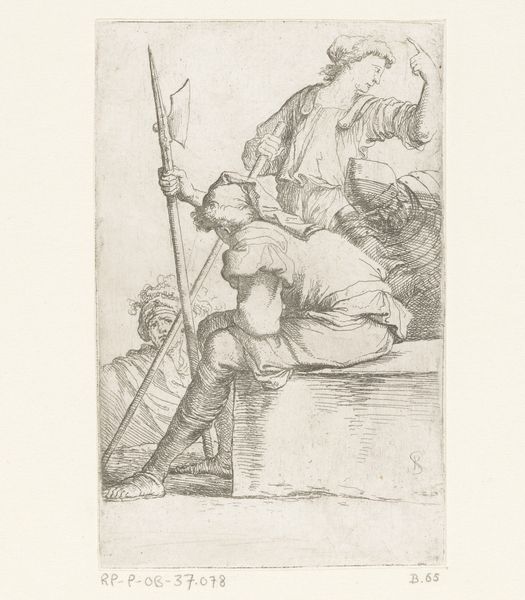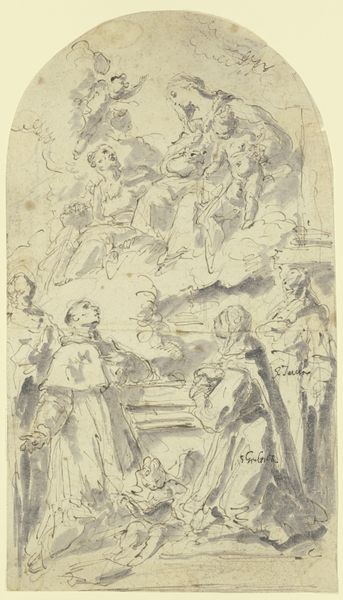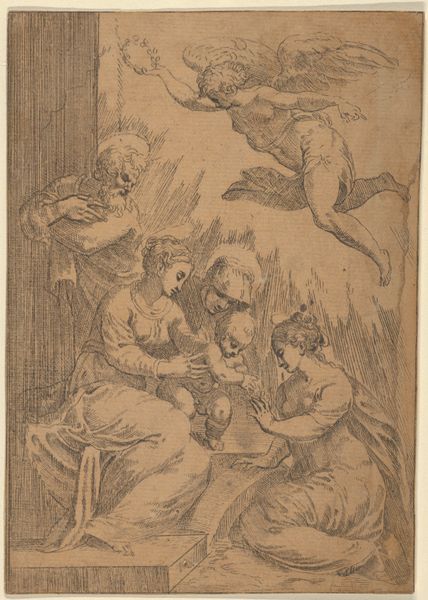
drawing, paper, ink
#
pencil drawn
#
drawing
#
baroque
#
charcoal drawing
#
figuration
#
paper
#
ink
#
pencil drawing
#
pencil work
#
history-painting
Dimensions: height 149 mm, width 111 mm
Copyright: Rijks Museum: Open Domain
Editor: Here we have Gerard ter Borch’s "Judith and Holofernes," a drawing from 1627 rendered in ink and charcoal on paper. It's quite graphic; you really see the violence of the scene depicted. What draws your eye when you look at this piece? Curator: What interests me are the raw materials and the process of creating this image. Borch uses readily available materials – paper, ink, charcoal – to depict a scene of extreme violence. It begs the question: why this specific medium for this subject matter? How does the "cheapness," or better to say, the accessibility, of these materials speak to the wider social context and potential audience of such imagery? Is this study purposed to prepare the subject and refine his understanding before using it within a bigger artwork, as commonly found across masters' ateliers? Editor: That’s a great point! So you're thinking about how the affordability of the materials might have influenced the accessibility and even the consumption of this rather gruesome subject? Curator: Exactly! Consider also the labor involved. Drawing, even in preparation for painting, was still a form of artisanal work. Ter Borch is physically enacting the scene, using his skill to transform basic materials into something laden with meaning and perhaps influencing or hinting at the commercial and aesthetic potential of his labour. The baroque aesthetic itself was a "product", made for wealthy elites that wished to communicate an image of opulence and excess that was socially built, not innate. Editor: This changes how I see the artwork; I didn't even notice how economic the raw materials are compared with, for instance, marble. I was stuck on the aesthetics, when actually the creation and intent of the work can stem from the supplies available. Curator: Right. The materiality isn't separate from the message; it's intrinsic to it. Recognizing these connections allows us to question assumptions about artistic creation, blurring lines between art and craft. Editor: Thanks! I'll be thinking about art materials differently now!
Comments
No comments
Be the first to comment and join the conversation on the ultimate creative platform.
